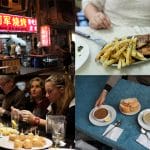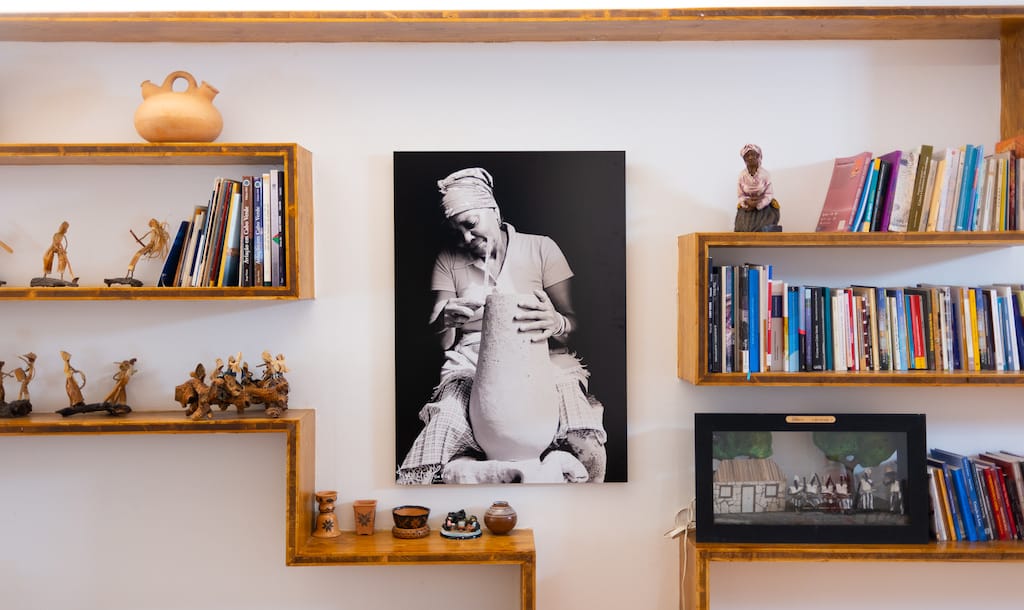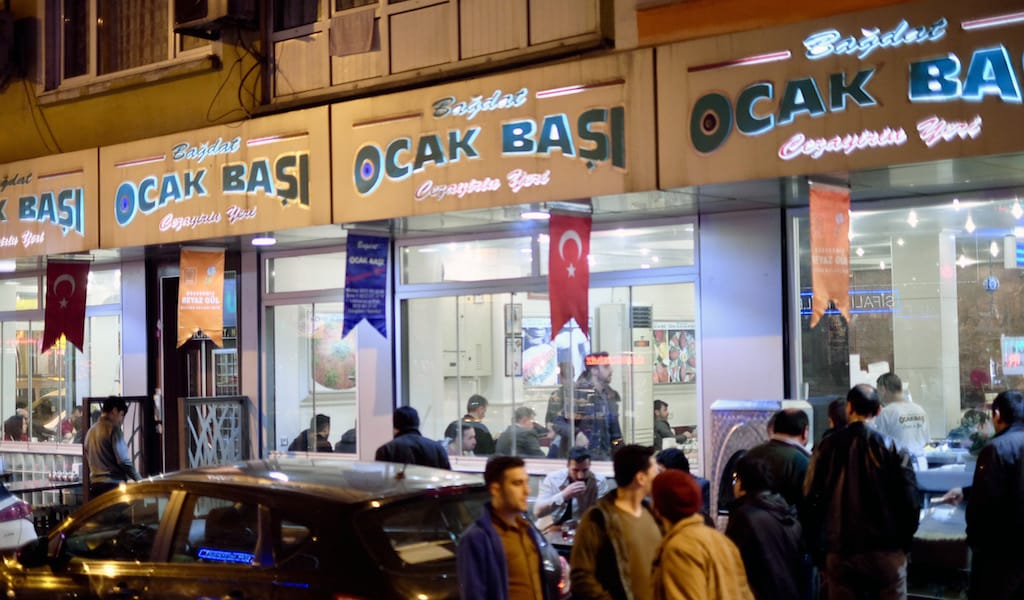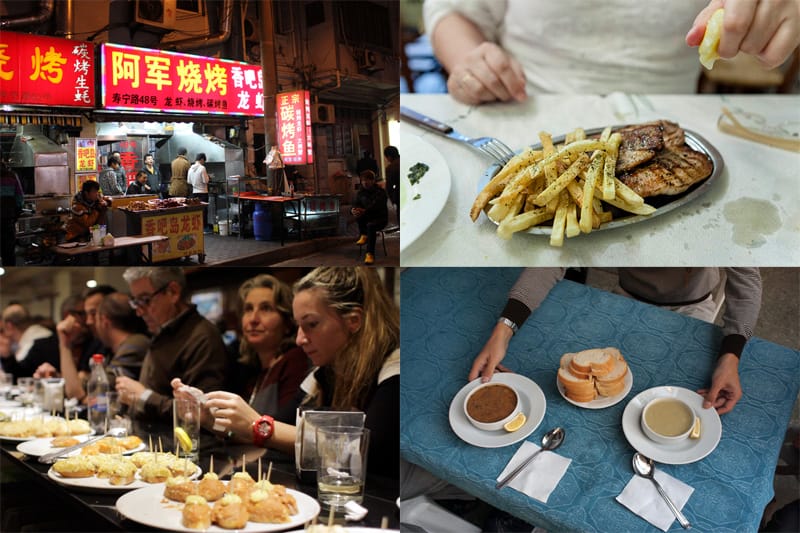It’s a Sunday and, in the blink of an eye, Manojo is full. People move between tables with familiarity; customers greet one another, say hello with a kiss on the cheek or give a wave – it feels as if everyone is a regular in this small establishment on José Arana Street in San Sebastian’s beachside Gros neighborhood.
Manojo was created for just such a purpose, helmed by a couple of young chefs obsessed not so much with fine dining but with assuring a fine evening for all guests, by way of creative and honest food; for wines that are ready to start a good conversation and, mostly, for an ambience that feels as warm as a friend’s hug.
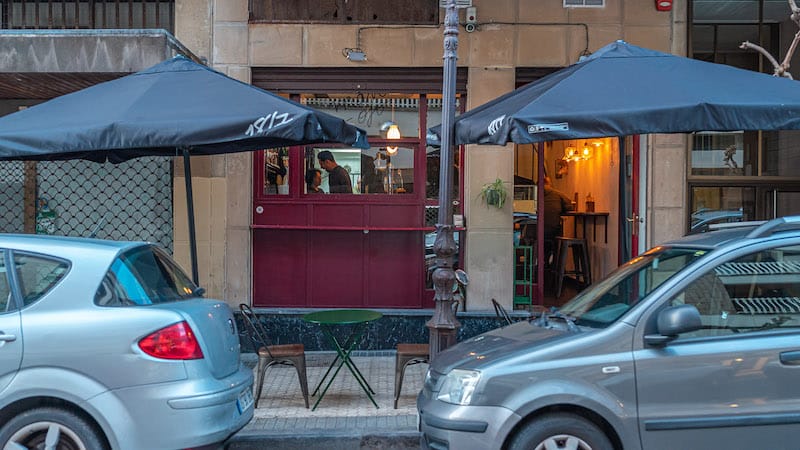
While Marco Bellinzis operates down in the kitchen – his head occasionally pops up from behind a wall on which the word “Sukaldea” (“kitchen” in Basque) is painted in colorful letters – Lina Álvarez moves dozens of glasses, cups, plates, cutlery, corks, bottles and orders back and forth from behind the bar to the tables. Despite the speed with which she manages to do countless things at once, she welcomes diners calmly and happily, with the smile worn by those fortunate enough to deeply enjoy what they do. Through a small window, we see Marco lifting his beard over pots and pans to greet people as they arrive. He hands a plate of fennel and orange-marinated sardines to his teammate, who returns to the bar, takes four glasses of wine as well as the bottle she just opened a second ago, and heads out to the street where small tables are set on the sidewalk. She serves the dish to accompany another, with what she describes as gnocchetti with kokotxas (the fatty lower part of a fish’s neck, a local delicacy), broccoli, dill, and lime. “Que aproveche,” says Lina to her guests, with her own delicate and sweet Bogotan accent, inviting all to simply enjoy.
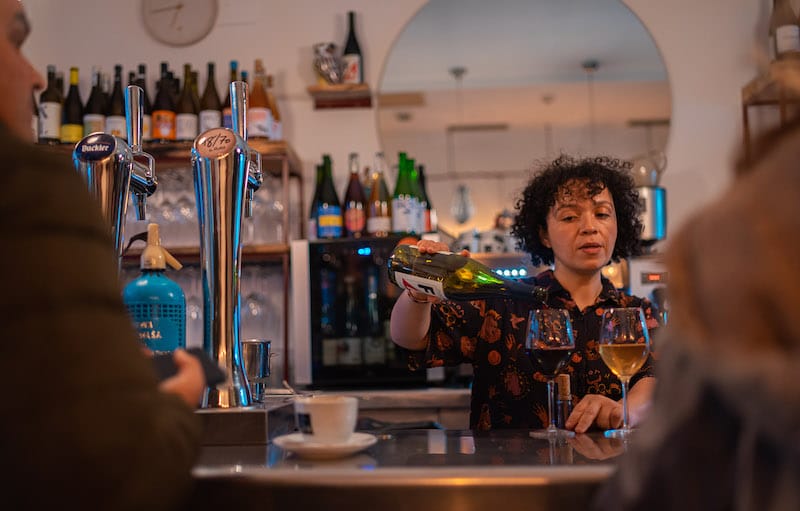
In each item on Manojo’s menu – a chalkboard with a handwritten list of dishes – vegetables are an essential starting point, in combinations that are difficult to predict. Everything is marked by seasonality, but not only that: the rhythm of the owners’ appetites defines the score. During their visits to the markets, they ponder what to do with a potimarron squash or with a bag of beautiful artichokes. Manojo is where they explore ways to use these local ingredients, like pancetta made from euskaltxerri (the iconic Basque black pig) or where, thinking out loud, they debate whether to “sauté this, brown that, and finish the preparation with a bit of this and that,” without much time to test. “There’s no R-and-D office here,” Lina reminds us, with a spark in her eyes, while we bite into seasoned olives and enjoy the reggae music playing in the restaurant. “Although sometimes we have additional support, it’s just the two of us covering everything.”
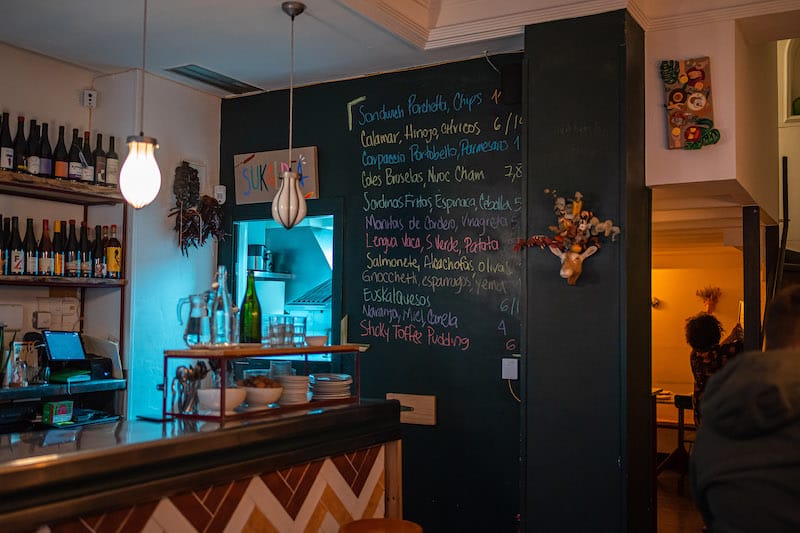
Lina and Marco are not from here, but over the years they have become true locals – even though neither initially believed they would end up rooting their lives in the Basque Country. Marco is from Sardinia and lived in Barcelona for some time before moving to San Sebastian, where he has worked for the past 12 years in various restaurants (notably Cívico 14, known for its Italian cuisine, now closed), all while studying a pastry master’s degree at the Basque Culinary Center. Lina grew up in Bogotá, Colombia, and, since coming to this region eight years ago to study (graduating from the Luis Irizar Cooking School in San Sebastian), has worked in local establishments such as Botánica and Geralds.
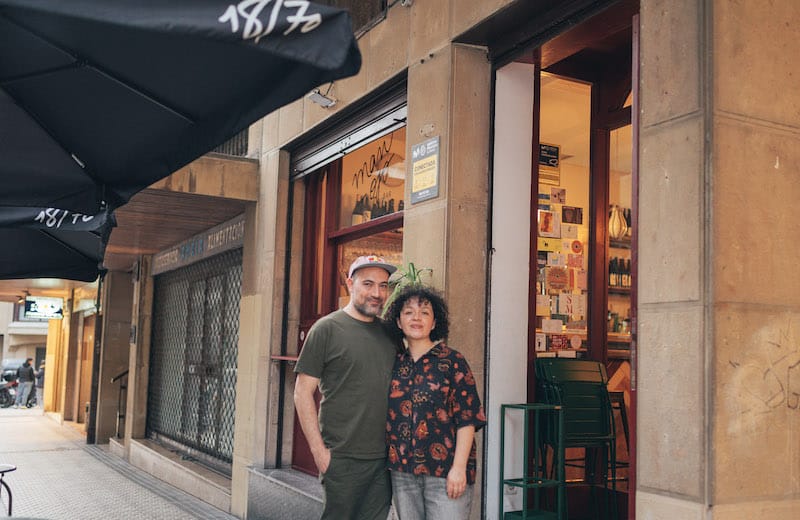
Since the two met, their paths have aligned not only as a couple but also as business partners, opening Manojo in 2022, an informal but dynamic addition to the local restaurant scene. This joint project meant an exciting opportunity for Lina and Marco to share, through food, the open, travel-filled and learning-rich story they embody.
The menu changes constantly, and therefore, there is a constant effort to ensure that it comes out “balanced,” providing options “so that everyone can eat well without it costing a fortune,” they explain. Under this motive, they include around 12 daily dishes (most of them available in full- and half-portions), with the aim for customers to share an assortment of different plates. On our visit, these included everything from callos fritos con salsa brava (fried tripe with bravas sauce), a porchetta sandwich with cheese and salsa verde; potatoes with beets and crème fraîche; brussels sprouts with nuoc cham, a Vietnamese fish sauce; to hake with escarole and pine nuts; euskalquesos (i.e., cheeses from the Basque Country) or a pumpkin crème brûlée.
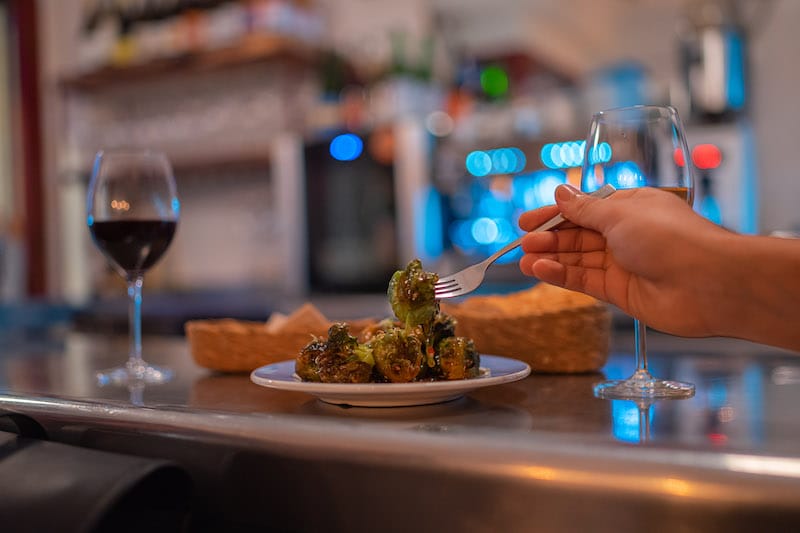
With Lina as the eyes and Marco the hands, together they define the menu as they go along, guided by their experience and the clear intention of offering their diners what they themselves like to eat. “Zero junk food; same philosophy applies for wines,” says Lina, as she opens the beer tap to serve some drinks.
It wouldn’t make sense, they explain, for them to offer what “others know how to cook better, nor to focus on having the same old croqueta de jamón, ensaladilla rusa, or txipiron,” all classic bites found in any bar. What interests them, instead, is to offer “options that go straight from the market to the plate and which result from an exercise of live creativity.” The advantage of not being natives of San Sebastian is precisely what gives them creative freedom, explains Lina, though she mischievously pulls on a symbol hanging around her neck like an amulet over her black hoodie: “Just in case, I always wear it! It’s a Basque-Navarran symbol from the Baztan Valley.” Who knows, even some local spirits might be watching – and enjoying – from above.
Sasha CorreaMagdalena Staurino
Published on March 14, 2024
Related stories
June 22, 2023
LisbonOne of the joys of Lisbon’s food scene is the access it allows to cuisines from across the Lusophone world. And one of the most represented is the food of Cabo Verde (formerly known as Cape Verde), an archipelago of 10 islands off the western coast of Africa. Its ubiquity is due to immigrants from…
April 9, 2018
IstanbulIstanbul’s T1 tramway is relatively pleasant if you can find a seat, but borders on unbearable if you are on your feet. Back in 2015, we wrote about a trip we took from the line’s first stop all the way to one of its last, which lies way out in the district of Güngören. By…
December 20, 2012
The CB Network | By Culinary Backstreets
The CB NetworkContinuing a tradition we began at IstanbulEats.com, as we approach the end of the year, we’ll be publishing “Best Bites of 2012,” a roundup of our top culinary experiences over the last year in each of the cities Culinary Backstreets covers. Submitted by our correspondents in Istanbul, Athens, Barcelona, Mexico City and Shanghai, these “Best…
















































